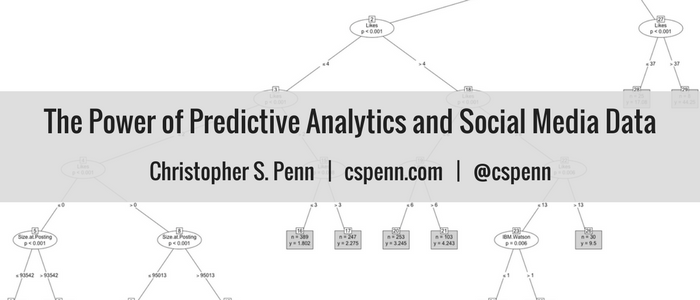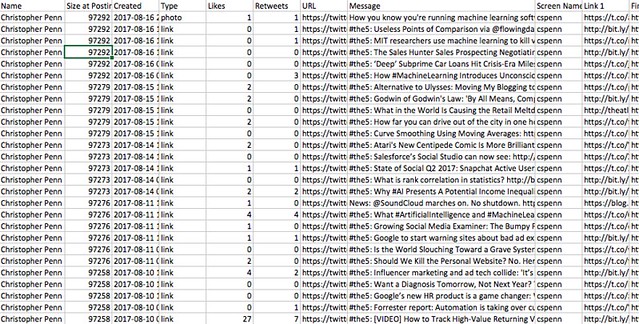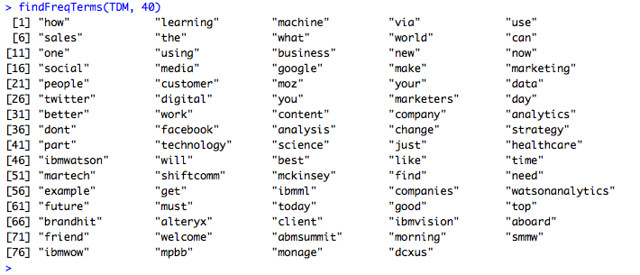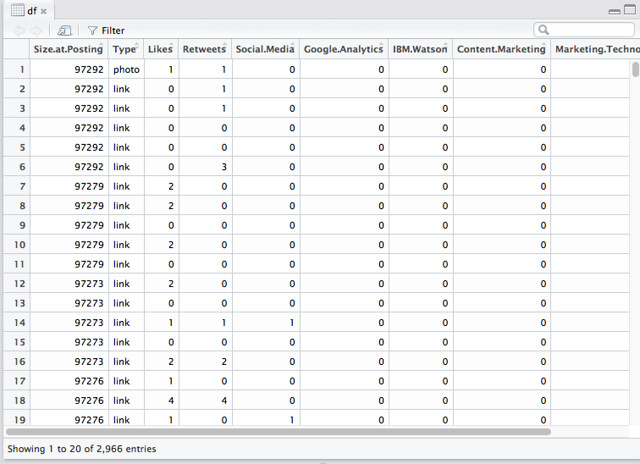Few things are as compelling to marketers as the promise of prediction. Every marketer wants to know what will happen; what has happened is of less interest because we can’t change the past. If we knew what was likely to happen, we could plan in advance for it.
This excludes black swans that we cannot possibly predict, such as wars, stock market crashes, etc.; we are focused on the cyclical, seasonal patterns most businesses see in social media marketing.
Suppose we knew what was going to happen next year in social media on a day-to-day basis. What would we do differently?
- Would we change the type of content we share?
- Would we change platforms?
- Would we change the audience we’re trying to appeal to?
Whatever choices we’d make, knowing in advance would allow us to plan ahead, investing time in what’s going to work versus just trying a little of everything.
A Very Brief History of Social Media Analytics
For years – from 2003 to 2011 – we had very little in the way of social media analytics. We had data from social networks that was sparse or incomplete, and we had no marketing analytics software to help us do effective attribution analysis. We had no way of proving the value of social media.
Once marketing analytics tools became more sophisticated, such as Google Analytics™ offering multi-channel funnels and assisted conversions, our ability to understand the value of social media and tie to business outcomes improved significantly.
Today, thanks to modern statistical and machine learning software, we have the ability to truly understand the value of social media. Once we’ve established value, we move onto determining what to do differently to increase impact.
Example: Ascertaining Social Media Topics Impact
Let’s look at a simple example of how we use predictive analytics to improve our social media marketing. Using Facebook’s free analytics service Crowdtangle, let’s download a year’s worth of social media engagement data. We’ll use my Twitter handle because it has the largest, most engaged audience.
What’s inside the data? Follower counts, the type of media, the date published, and the engagements.
These are good starts for building a predictive model, but it’d be helpful to have some more information, to enrich the model. Let’s use some basic text analytics to determine frequencies of top words and phrases. Using the R programming language, we can find the top occurring terms in my tweets:
Based on this list, we should be able to classify my tweets as falling in one of roughly 7 buckets:
- social media
- Google Analytics
- IBM Watson
- content marketing
- marketing technology
- SEO
- AI/Machine Learning
Once classified, we take the topics and the performance and create a statistical model to determine whether the topics have any bearing on performance. We begin by removing the stuff that’s unimportant:
In this case, the method of machine learning we’ll use is a random forest. The target metric I want more of is Retweets, so I set that as the goal and have the software determine what factors play into that goal most:
What do we find in this simplified model? Essentially, Likes beget Retweets. If I want to earn more Retweets, my content needs more Likes. The type of content plays a secondary role, my audience size plays a tertiary role, and then we dig into the topics.
Above, we see that I should focus on marketing technology, IBM Watson, and AI.
One of Many Predictive Social Media Models
The above assessment of what should work going forward is only one of many predictive models I could use to improve social media engagement. Logically, the next thing to do would be examine the search frequencies for my top 3 topics using predictive analytics to determine what my editorial calendar should be.
I might also want to blend in Google Analytics™ data to further enrich my dataset, or even bring search data into my social media dataset to establish relationships between what people search for and what they react to over time.
Finally, if I really want to amp up my understanding of what to do in the future, I could start weaving in competitive social media data, identifying the best-performing content from everyone talking about my topics.
With predictive analytics and machine learning, we no longer need to guess or rely on gut instinct alone about what content to create. Instead, we build a data-driven plan, test, and analyze repeatedly until we find what works best.
If you’re interested in learning how to do this for yourself, I’ll be showing it at Social Media Marketing World 2018. Come see my session, bring your laptop, and you’ll run an analysis of your own data using models like the one above. Buy a ticket to Social Media Marketing World here. (affiliate link)
You might also enjoy:
- Mind Readings: Generative AI and Addition vs Substitution of Jobs
- Fireside Chat: Geraldine Deruiter on Food, Feminism, and Fury
- Almost Timely News: Principles-Based Prompt Engineering (2024-02-25)
- Almost Timely News, February 11, 2024: How To Evaluate a Generative AI System
- Almost Timely News, January 7, 2024: Should You Buy a Custom GPT?
Want to read more like this from Christopher Penn? Get updates here:
 Take my Generative AI for Marketers course! |







Leave a Reply